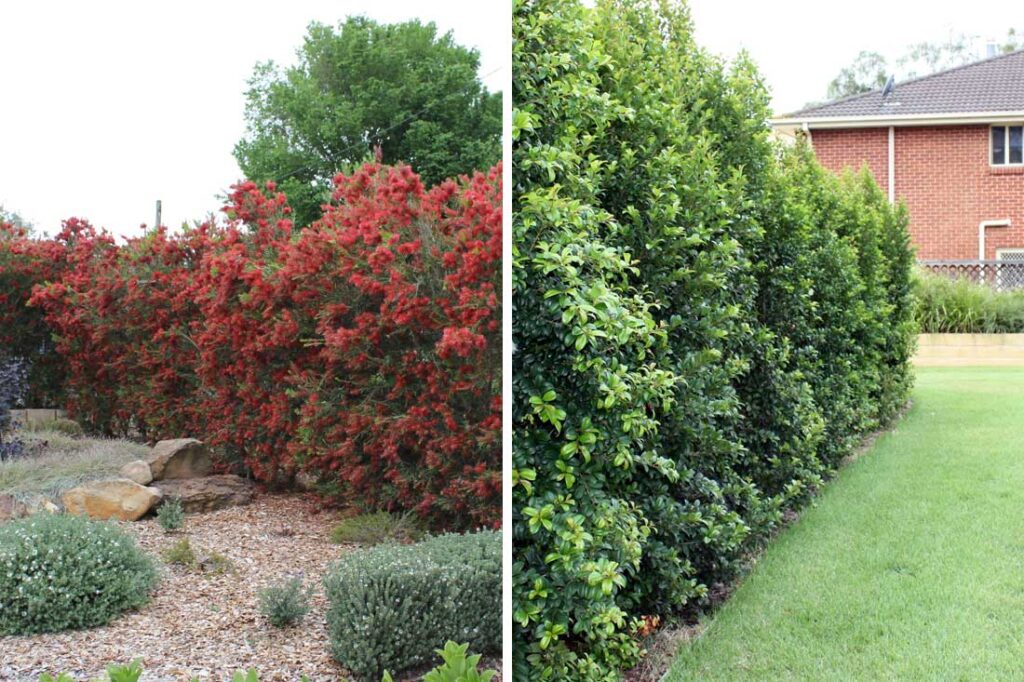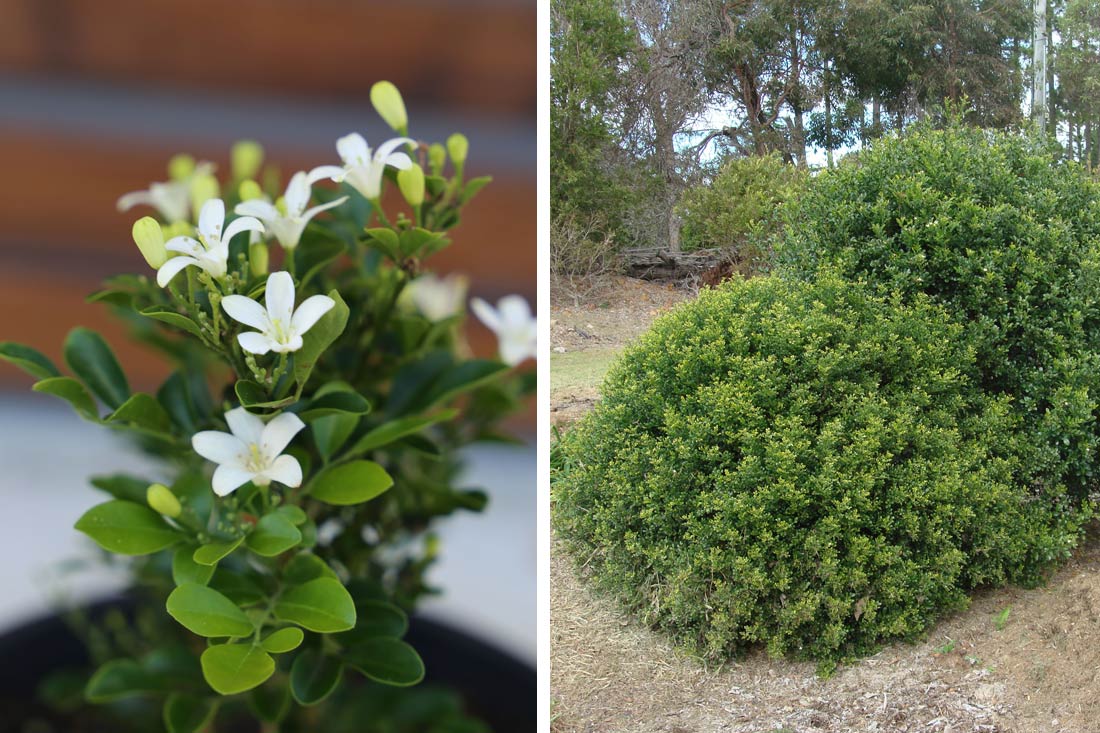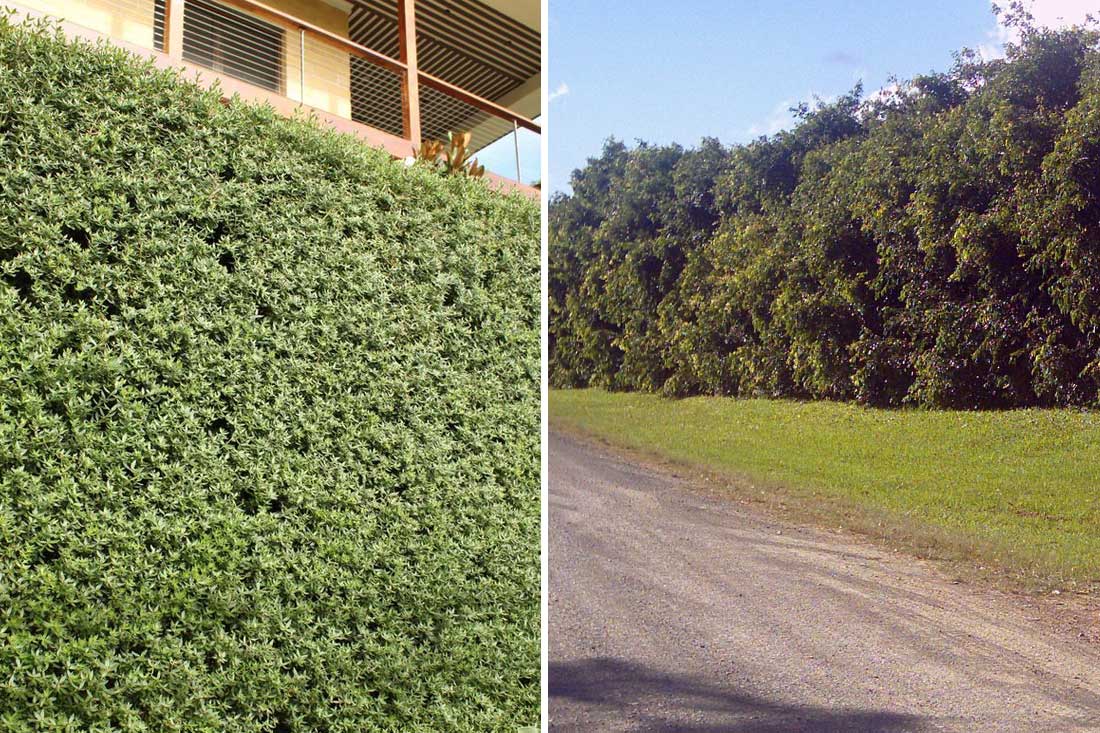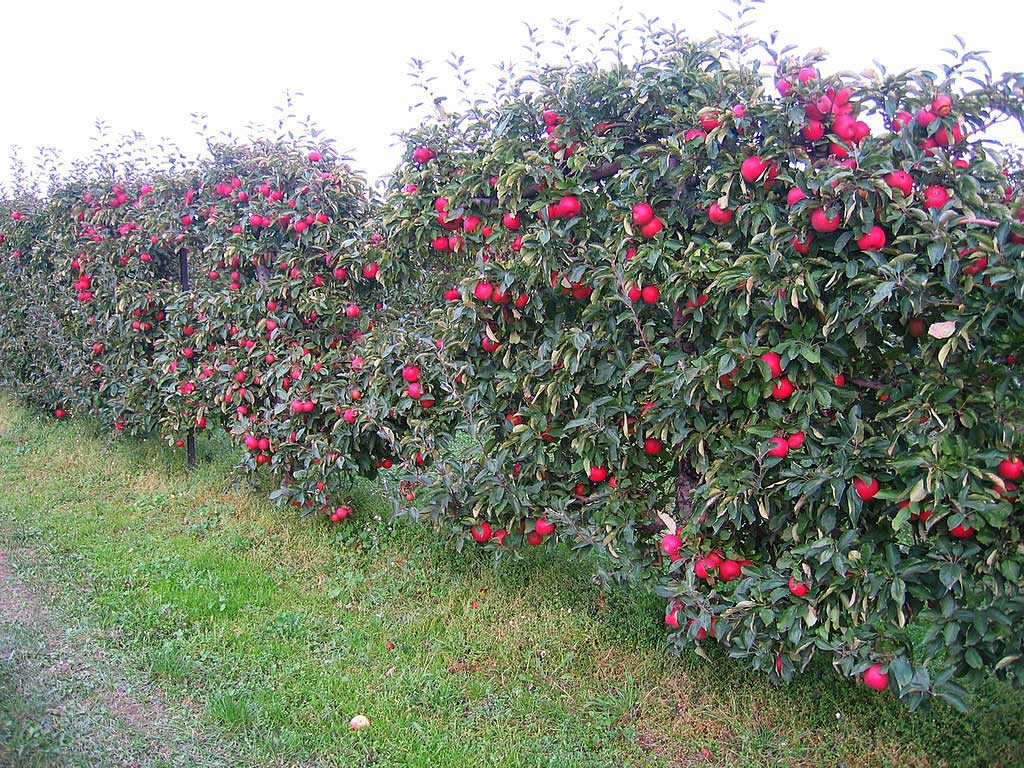If you’re contemplating the idea of using a hedge instead of a traditional fence line, you are not alone. Many homeowners and landscape designers are increasingly opting for hedges as they provide a natural alternative that can be both aesthetically pleasing and environmentally beneficial. In this article, we’ll explore the benefits and drawbacks of using a hedge instead of a fence, and introduce you to columnar hedges that require less maintenance while maintaining a thin, tall shape.
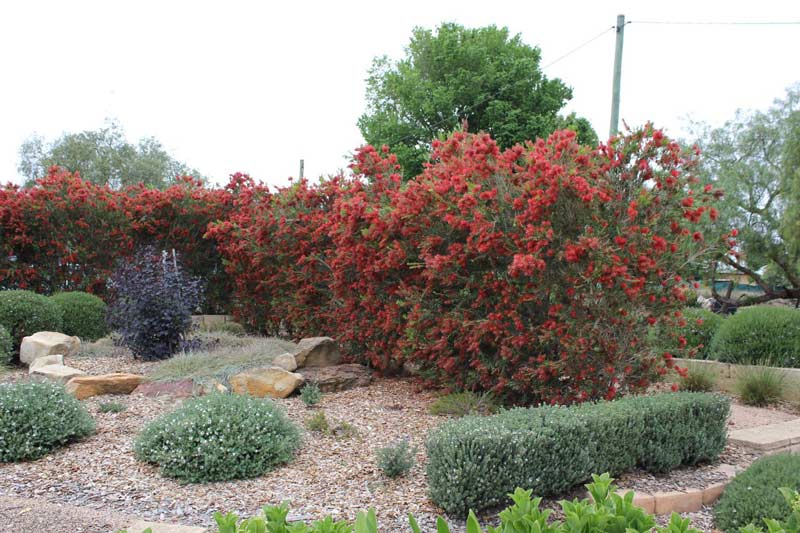
This tall, slender hedge can be pruned once or twice per year for a tighter appearance, or you can leave it to express a more untamed shape like this. Slim™ Callistemon viminalis ‘CV01’ PBR
Benefits of Using a Hedge Instead of a Fence
- Aesthetic Appeal: Hedges can significantly enhance the visual appeal of a property. They provide a natural, green barrier that blends seamlessly with the landscape.
- Environmental Advantages: Hedges contribute positively to the environment by producing oxygen, providing habitats for wildlife, and improving air quality. They can also assist with pest control by providing food and habitat for predatory and parasitoid insects, reptiles, birds, and more.
- Noise and Wind Reduction: Dense hedges can act as sound and wind barriers, helping to reduce noise pollution from nearby roads or neighbours and dampening harsh winds to provide a favourable micro climate.
- Privacy: A well-maintained hedge can offer excellent privacy, especially if it is tall with a dense growth habit.
- Flexibility and Growth: Hedges can be shaped and trimmed to fit specific design preferences. They can also grow over time, offering increasing levels of privacy and protection.
- Property Value: Attractive, well-kept hedges can boost the curb appeal and value of a property.
Drawbacks of Using a Hedge Instead of a Fence
- Maintenance: Hedges require regular trimming and care to maintain their shape and health, which can be time-consuming and costly. With that being said, some varieties may only need pruning once per year and others don’t need to be pruned at all and keep a tall, slender, columnar shape.
- Space Consumption: Hedges take up more space than fences, which can be a limitation in smaller gardens.
- Time to Establish: It can take several years for a hedge to grow fully and provide the desired level of privacy and security.
- Pest Attraction: Hedges can attract insects and wildlife, which might not always be desirable. (This is a short-sighted view, because in the long run, they can help build a more resilient garden with beneficial predators and parasitoid organisms that control pests)
- Inconsistent Barrier: Unlike a fence, hedges can have gaps, especially if not properly maintained or if damaged by weather or pests.
- Cost: The initial cost of purchasing and planting a hedge can be higher than installing a fence, and ongoing maintenance adds to the expense.
- With a tight columnar shape like this lilly pilly hedge, the fence behind is optional. Straight and Narrow™ Syzygium australe‘SAN01’ PBR Intended
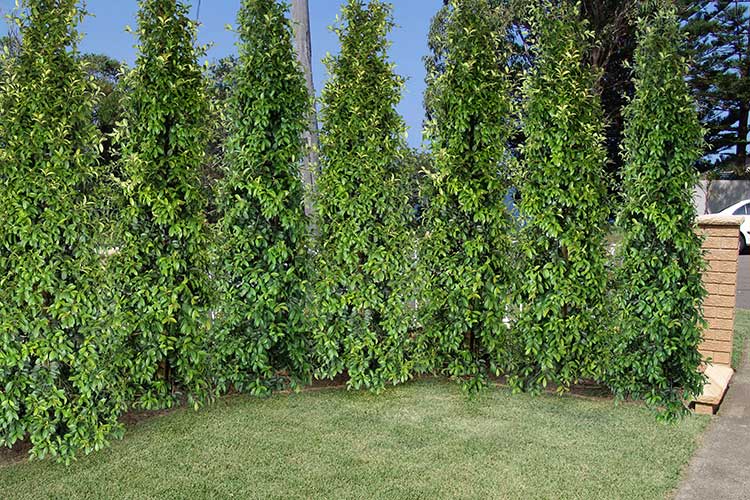
Columnar Hedges with Low Maintenance
For those concerned about the maintenance and space requirements of traditional hedges, columnar hedges present an ideal solution. These hedges naturally grow in a narrow, upright form, making them perfect for tight spaces and providing privacy without taking up much room. Prune them once or twice per year, or even once every few years, to keep them in shape. Some fast-growing plants may require more regular pruning, but we won’t mention them in this article.
Benefits of Columnar Hedges
- Space Efficiency: Due to their slender shape, columnar hedges occupy minimal ground space, which is perfect for small gardens or urban settings.
- Low Maintenance: These hedges generally require less pruning compared to wider varieties, as they naturally maintain their narrow, vertical growth habit. You can even opt to forgo pruning altogether for some of the most narrow varieties.
- Aesthetic Appeal: Columnar hedges offer a clean, structured look that can complement modern landscapes and architectural designs.
- Privacy and Windbreak: Despite their slim profile, columnar hedges can grow quite dense and tall, creating effective privacy screens and windbreaks.
Suitable Varieties
- Slim™Callistemon viminalis ‘CV01’ PBR: This bottlebrush grows to 3m tall x 1.3m wide with pruning required only once every year or two. It flowers for most of the year, is myrtle rust and phytophthora resistant, and can thrive in both flooded and drought conditions.
- Straight and Narrow™ Syzygium australe ‘SAN01’ PBR Intended: This aptly named cultivar is psyllid resistant and can grow in shaded conditions as well as full sun. It can grow to 8m tall x 1.5m wide with pruning needed once every year or so.
- Pinnacle™ Syzygium australe ‘AATS’ PBR: This variety is taller than the previous lilly pilly with a similar tolerance to shade and sun, however it’s not resistant to psyllids. Use this variety if you really need the height, as it grows to 10m high x 1.5m wide with pruning needed once every year or so.
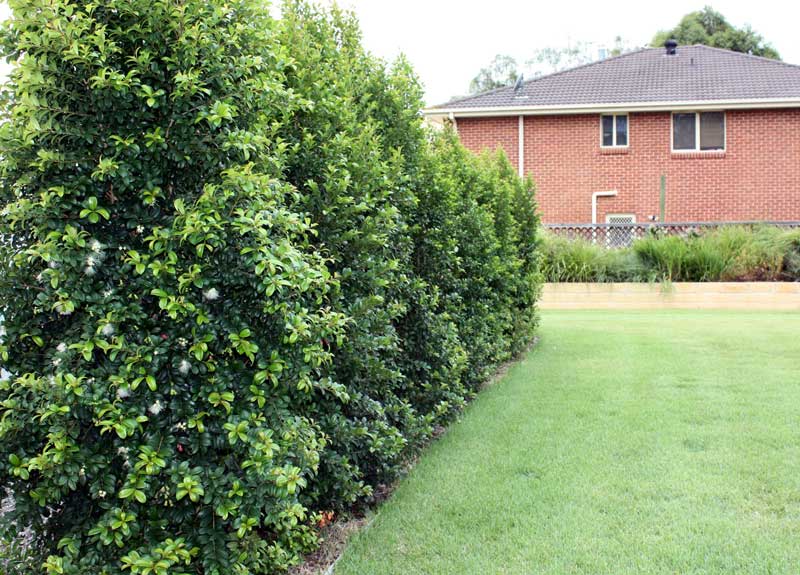
Care Tips
- Planting: Ensure proper spacing when planting columnar hedges to allow for air circulation and healthy growth. Follow the specific guidelines for each plant on the label, or on the breeder’s website.
- Watering: Regular watering is essential during the first 8-13 weeks to establish the hedge. Once established, most columnar hedges are relatively drought-tolerant but will appreciate irrigation.
- Pruning: Minimal pruning is required to maintain the slender shape of well-bred columnar plants. Light trimming once or twice a year is usually sufficient to keep the hedge looking tidy, and the natural shape can be embraced if you don’t wish to prune at all.
- Fertilising: Apply a balanced fertiliser in early spring to promote healthy growth. Follow the recommended dosage for the specific hedge variety. All of the plants mentioned in this article prefer a well-rounded NPK ratio rather than a “native” fertiliser with low P. (“Native” fertilisers should be called “Proteaceae” fertilisers instead)
- Pest Control: Regularly inspect the hedge for signs of pests or diseases and take appropriate action if needed.
- No fence needed. Pinnacle™ Syzygium australe‘AATS’ PBR
Conclusion
Choosing between a hedge and a fence depends on various factors including aesthetic preference, budget, maintenance capacity, and the specific needs for privacy and security. You certainly don’t need both; if you’re going to install a hedge anyway, consider whether you do in fact need the fence at all.
While hedges offer numerous environmental and visual benefits, they do require care and time to establish. Columnar hedges, in particular, provide a practical and stylish option for creating a tall, narrow barrier with minimal maintenance that doesn’t take over the whole space. By selecting the right variety and adhering to basic care practices, you can enjoy a beautiful, low-maintenance hedge that enhances your garden’s appearance and functionality.
If you’re ready to embrace the green, natural beauty of a hedge line, consider the benefits and choose the right plants for your landscape. Happy gardening!

